The aurora enigma: Science and myths

Last week, our Facebook walls got painted purple, crimson and green. Netizens looked up and saw the colourful sky through their camera lenses. Those close to the North Pole started sharing images of the Northern Lights (aurora borealis) that they captured during their nightly adventures. Our friends from the Southern Hemisphere followed suit, sharing their experiences of the Southern Lights (aurora australis). These images were much more intense than the typical Northern Lights seen in polar proximity.
The timing aligned with a solar storm that resulted from the reversal of the Sun's magnetic poles during its 11-year cycle. The coronal mass ejections caused magnetic waves that leapt through space at a speed of one million miles per hour. People near the two poles witnessed a surreal, ethereal light show as charged particles clashed with air molecules in the atmosphere as our own magnetic force fields deflected most of the solar wind. The burnt-out oxygen molecules emit green or yellow lights, while the nitrogen is responsible for the purple or crimson lights. For millennia, these unearthly images from outer space have ignited human imaginations as they tried to come up with an explanation of the supernatural activity.
The phenomenon is named after Aurora (Eos in Greek mythology), the Roman goddess of dawn. Her travels between her siblings Helios (the Sun) and Selene (the Moon) were once thought to be the cause of the nightly change of colours. Galileo, in the 17th century, named it aurora borealis (literally, sunrise wind). The ancient Chinese called this vista the "five-coloured sky." The Scandinavians thought of it as fox fire, thinking the mythical fox spirits brush their tails against the mountains to cause various sparks to light up the winter sky. The Inuit people in Alaska imagined the event as a dance of the spirits. In 922, the Persian scholar Ahmad Ibn Fadlan accompanied the Vikings in an expedition, fictionalised in the movie The 13th Warrior, during which he saw the Northern Lights, only to learn that "they are the believing and the unbelieving Jinn. They fight every evening and have not failed to do so every night since they were first created."
Today, we have the privilege of understanding the science behind the aurora, a phenomenon that has captivated the imagination of various cultures worldwide. In Norse mythology, the aurora is the most prominent. The Vikings interpreted the lights as a manifestation of their chief god, Odin. The light glow comes from the Valkyries—female armed warriors on horseback—who would take the valiant heroes who had fallen during battles to Valhalla. The light celebrates their heroism. The Algonquin tribes in Canada and northern Michigan believed that the creator, Nanabozho, used these lights to signal to his people that he was thinking about his creation from his faraway abode. The aurora was a reflection of his fire. For the Sámi, the Indigenous people of northern Scandinavia, the lights are far from heroism and bravery. They are the harbinger of bad omens.
Interestingly, historical events such as the Franco-Prussian War (1870-1871), the American Civil War (1861-1865), the French Revolution (1789-1799), and the Greater Wrath in Finland (1714-1721) witnessed auroras. Their timing and dramatic appearance in the skies led people of that time to interpret them as reflections or omens of the conflicts and bloodshed they were experiencing. For the locals, the crimson streaks of the aurora in the Northern Hemisphere represent an evil omen, a portent of war, or other dangers. This connection underscores the human tendency to find meaning in natural events, especially during times of crisis and uncertainty.
Could it be a coincidence that the aurora sighting coincided with one of the most brutal massacres of innocent people in Gaza? The fear that Israel might use nuclear bombs to solve the Palestine question once and for all adds one more layer to the aurora sighting. An apocalyptic narrative permeates the Zionist project of building the third temple.
Perhaps there is no room for such superstition in science. However, the confluence of shock and awe that our ancestors felt, later clarified by scientists, inspired me to delve into the realm of the known and the unknown. The images showering our walls are part of a larger story, i.e. history. The nightly sky's beauty and wonder belie the ionic wind that could have swept away our planet. The geomagnetic field that funnels away the jet stream can still damage our electronic signals and GPS systems, causing havoc. We are oblivious to the danger because we remain unaware or half-aware of it. The interplay between myths and scientific explanations of auroras illustrates the broader spectrum of human imagination and its capacity to find meaning in the natural world. By the same token, our complicity in near and far crimes can thus have far reaching consequences.
Auroras, as a lens on human imagination, serve as a powerful example of how humans use imagination to bridge the gap between the known and the unknown. However, we humans invented a much more effective and powerful lens and sent it across the galaxy to capture images of a time that is not yet here. Earlier, Nasa's James Webb Space Telescope captured distant images of creation pillars where stars are born. Such images give an eerie feeling of our miniscule status in the vast expanse of creation. The chronicle of a foretold galactic death resonates with us. There seems to be some sort of connection between stories and history—between the micro and the macro, the mundane and the divine. Religious zealots, striving to hasten the emergence of a messiah and usher in the apocalypse, are enacting a drama within the crimson curtain, manipulating the events in the sky. The problem is that the forbidden fruit of knowledge corrupts our innocent imagination. There seems to be no escape from reality, even if we pretend not to see it. By not being a party to the inevitable, we can at least limit our damage to the world and its inhabitants.
Dr Shamsad Mortuza is a professor of English at Dhaka University.
Views expressed in this article are the author's own.
Follow The Daily Star Opinion on Facebook for the latest opinions, commentaries and analyses by experts and professionals. To contribute your article or letter to The Daily Star Opinion, see our guidelines for submission.
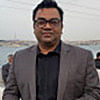
 For all latest news, follow The Daily Star's Google News channel.
For all latest news, follow The Daily Star's Google News channel. 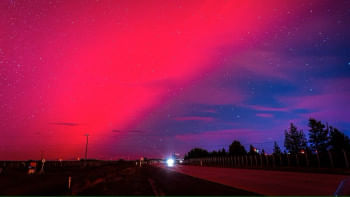




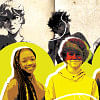
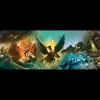

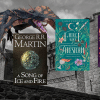


Comments